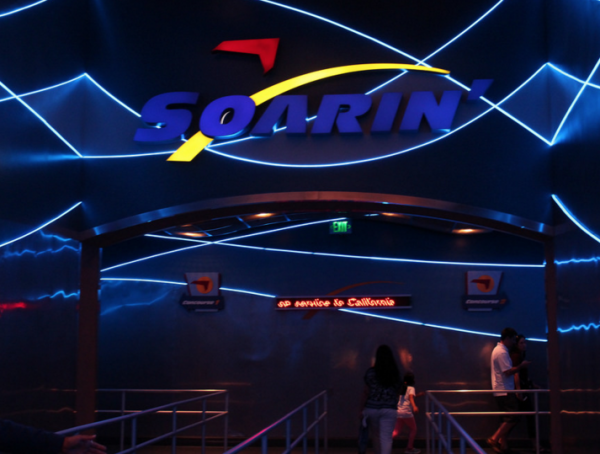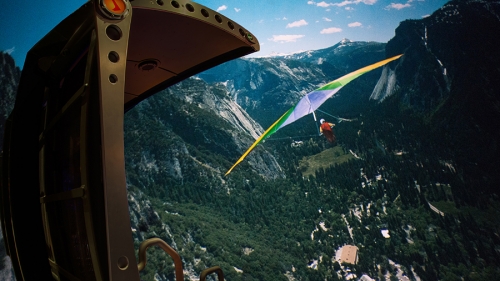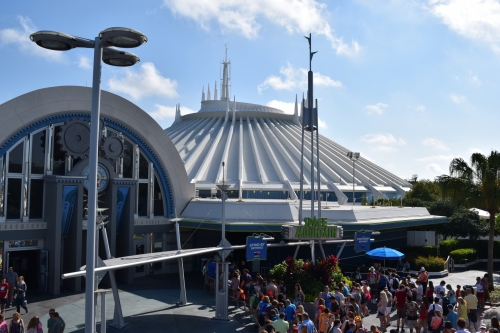
If you’ve been visiting Walt Disney World since the park’s early days, or at least prior to 1999 when Disney’s Fastpass service was first introduced, then you remember the days when waiting in line for a ride meant just that. Of course, Fastpass helped to alleviate the pains of waiting in line for our favorite attractions, and more recently Fastpass+ and the My Disney Experience app has made the experience even more tolerable for many guests. But what about those lines that you just can’t get a Fastpass for?
Even with the enhanced planning abilities presented to guests through My Magic+, a Fastpass can really only get you so far. Unless your three original Fastpass selections are early in the morning, and you’re able to continually reserve more Fastpasses throughout the day, which in actuality is very unlikely, you are bound to spend at least some time waiting in line: and this is where interactive queues come in.
Early interactive queues
In 2005, the first attraction that would eventually receive an interactive queue opened at Walt Disney World. Soarin’ Over California opened as part of the Happiest Celebration on Earth promotion, which brought attractions from other Disney parks down to Walt Disney World. The attraction proved to be extremely popular among guests, and this instant popularity coupled with the lack of thrill rides (or any rides for that matter) in Epcot compared to the other parks immediately brought along high wait times.
The long waits caused many guests to rush to Soarin’ first thing in the morning to grab Fastpasses for the attraction later in the day. On a busy day in 2005, it would not have been surprising for Soarin’ to run out of Fastpasses before noon. (And this was before Fastpass+, meaning that guests would run to this attraction upon arriving in the park to manual print Fastpasses that would be for some time later in the day, which they would not even know until they physically reached the attraction). Of course, with Fastpasses running out early in the day, many guests found themselves waiting in a line that was 100 minutes or more.

By 2007 the first of many interactive queues opened at Soarin’, paving the way for even more immersive queue experiences to come later. The “interactive” part of the queue involved guests moving in certain ways while waiting in line to complete games and tasks on the screens above. The games fit the theme of the Land pavilion, with activities including having guests lean left and ride to guide a bird through a valley, and keeping flying objects afloat using their arms while the background changed through a number of earthy landscapes. Today we might view the technology used in this queue similarly to how a Nintendo Wii functions.
Walt Disney World’s first interactive queue made the wait time for Soarin’ a little less daunting for guests, but it was not without its flaws. For guests who either could not move in the way that the game wanted them to, or guests who simply were not interested in this level of physical activity while waiting in line, the queue was nearly useless. The games in the queue also often relied on guests working together as a group-- which is great when your family is interested in playing, but not so great when the family next to you doesn’t move, thereby causing your section of the queue to “lose.”
Another early interactive queue debuted a couple of years later at Space Mountain, another attraction which regularly holds notoriously long wait times. Like Soarin’, Space Mountain’s interactive queue features a series of games to keep guests busy while waiting in line. Unlike Saorin’ however, these games are somewhat more individualized, which perhaps unsurprisingly usually results in more guests playing.
The games at Space Mountain are based on classic space-themed video games. In this queue, guests are able to shoot asteroids, collect space junk, and help build a space station. While the overall score can be impacted if some of the group decides not to play, more guests seem to consider their individual scores rather than the group scores anyway. If you’ve ever seen or played the games at Space Mountain’s interactive queue, then you’ve seen how addicting they can become. For many guests, especially children, the games at Space Mountain are actually so much fun they really are not in any kind of rush to move down towards the rest of the line.
Space Mountain’s queue then is a double edged sword, and is often cited as an example of a poorly designed interactive queue by Disney fans who oppose the concept. While some praise interactive queues as excellent ways to become part of the story while passing time in line, others feel that they cause the wait times to actually increase because traffic jams are created when guests spend too much time playing the games.
If you really focus on how the line works, this is actually not the case at Space Mountain like some guests may believe. Chances are that even if the line has move while guests are playing the game, there will still be so much more line in front of them that they will have plenty of time to walk and meet the end of the line, and their wait time will not have been impacted at all. Instead of quickly walking to catch up to the family in front of them, they would spend the same amount of time in line with more time spent playing the game instead. But what about guests who aren’t interested in playing the games? Is the protocol for them to pass other guests in the queue, or wait behind the guests who are playing? We’ll come back to this later.


Add new comment